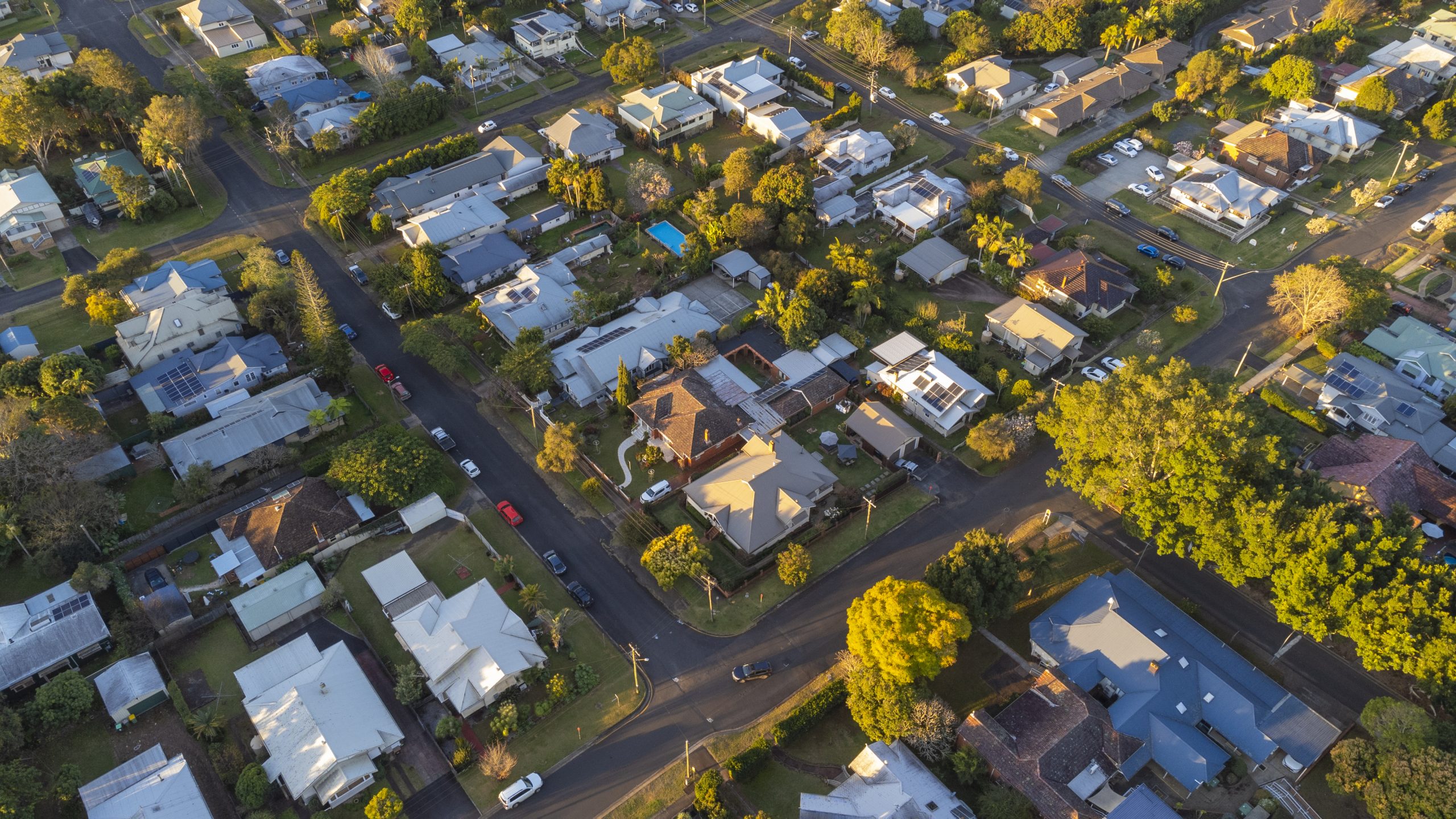Meet the neighbours before you buy: The real estate portal taking buyers behind the scenes
Co-founder of Homely, Jason Spencer, discusses how his own experience of a failed property purchase led to a lightbulb moment, and the birth of a new property platform
Jason Spencer is passionate about technology, but not for the sake of it. Instead, Spencer’s focus is the kind of ‘life changing’ technologies that make a difference in the way we live and do business. His most recent obsession is Homely, a real estate platform with a difference, offering reviews of suburbs and streets — by the people who live there. Founded with Adam Spencer, it’s the kind of game changer Jason wished was around when he was on his home buying journey, tapping into a desire from buyers to take a deep dive before purchasing, as well as giving locals the opportunity to share what they love about their area. The Homely story starts with a very personal experience, as Jason Spencer explains.

Kanebridge News: The Homely story comes out of your personal experience of moving to a suburb in inner Melbourne. What happened? Why did you hate it?
Jason Spencer: Homely was created out of my own frustrations with real estate. After buying my home in a nice leafy suburb in Melbourne, I quickly realised that the street wasn’t for me. Almost immediately after we moved in, we had all sorts of issues. First it was the neighbours, who we didn’t get along with, then it was the cut-through traffic and noise, the flooding and — the final straw—the swarms of bats that flew over our house each night, settling in our backyard! One night I remember saying to my co-founder, “If only I knew about this street before I bought the house”. And that was the lightbulb moment. That was when Homely was born.
KN: What would you have liked to have known before buying?
JS: The inspiration for Homely was the truth that “finding the right neighbourhood is just as important as finding the right home.” I’d like to have known what the locals thought, not just of suburbs but of individual streets as well. Before Homely, the majority of people would rely on generic suburb information available on Google and if lucky they’d find a static local guide page, census data or Wikipedia entry. To address this gap, we established a forum and community where real locals could openly share their experiences, insights, and history about their streets, suburbs, and towns. This kind of information is invaluable for making an informed decision about property, especially considering it’s one of the most significant decisions someone can make.
KN: Did you move? If so, what did you do differently the next time you were in the property market?
JS: Yes I did. I moved to something a little further out from the city but with more land and a bigger home for a similar price. This time, I did a lot more research on Homely and by asking locals what they thought. People were more than happy to share what they loved about their home suburb and streets, which is why we have the wealth of content on Homely we do.
KN: How did that personal experience spur you and Adam on to found Homely?
JS: For most of us, finding a home is one of the most difficult and stressful decisions we can make. As founders, we felt the combination of useful local information written by those that live in the neighbourhood combined with the access and utility of a real estate portal would make for a very unique way to find a home online. We wanted to create for real estate what sites like TripAdvisor had done to travel.

KN: You’re starting to build a substantial database of suburb reviews now. Where are the reviewers drawn from?
JS: Our reviews come from all over Australia. When we launched the site, we received some great media coverage, which generated an initial base of content. This encouraged locals to have their say about areas they knew well, which in turn created a sense of community on the Homely platform that grew, along with relevant property listings from all over Australia. We have seen some intense debate about suburbs, which is always interesting!
KN: What has surprised you, if anything, about the reviews?
JS: The amount of information (and passion) that locals are prepared to share about where they live. People love to talk about the great schools in a suburb, the best restaurants and shopping. Of course, crime and safety are always hot topics.
KN: What can a review on Homely give a buyer that a visit to a suburb cannot?
JS: Homely gives you immediate access to reach out to a community and unlock secrets and truths about the neighbourhood that you just can’t do easily by visiting the suburb. You can also ask questions and join local forums. We’ve had feedback that Homely reviews have saved people time and money, as they’ve been able to refine their property search and time spent on inspections.
KN: How specific can reviews get? Is it possible to read a street review?
JS: We pride ourselves on being the first in Australia to offer reviews down to the street level, delivering “hyperlocal” content that even includes vendors reviewing their own streets to give potential buyers a sense of what drew them to the area initially.
KN: What have buyers said about the value of the reviews?
JS: Buyers consistently tell us that Homely is a great starting point to the home buying journey. Whether they’re investors seeking information to bolster their decisions, or families searching for the perfect suburb, Homely reviews often serve as a first stop, offering valuable information they can’t get anywhere else. We find many buyers land on our street and suburb reviews via Google after searching for a specific location. While reviews can be diverse it’s the nuggets of information contained within the reviews that really help buyers.
KN: You’ve been in property for 25 years. What still excites you about the residential market?
JS: The untapped opportunities for innovation in the proptech space and the property seeking journey are what excites me most. From the birth of the first property websites in the early 2000s, to the innovations that Web 2.0 and Google Maps brought to portals in 2007, to the role of smartphone technology in the search experience, I’m now very excited to be a part of how AI and blockchain can enhance the home search experience.
KN: What’s next for Homely?
JS: We have a strong pipeline of innovations to make the home search experience better for every consumer. We are looking forward to a big 2024 with an increase in residential listings hitting the market and a forecast record number of home buyers and renters looking on Homely to discover their next perfect place to call home.
Records keep falling in 2025 as harbourfront, beachfront and blue-chip estates crowd the top of the market.
A divide has opened in the tech job market between those with artificial-intelligence skills and everyone else.
The 2026 McGrath Report warns that without urgent reforms to planning, infrastructure and construction, housing affordability will continue to slip beyond reach for most Australians.
Australia’s housing market has reached a critical juncture, with home ownership and rental affordability deteriorating to their worst levels in decades, according to the McGrath Report 2026.
The annual analysis from real estate entrepreneur John McGrath paints a sobering picture of a nation where even the “lucky country” has run out of luck — or at least, out of homes.
New borrowers are now spending half their household income servicing loans, while renters are devoting one-third of their earnings to rent.
The time needed to save a 20 per cent deposit has stretched beyond ten years, and the home price-to-income ratio has climbed to eight times. “These aren’t just statistics,” McGrath writes. “They represent real people and real pain.”
McGrath argues that the root cause of Australia’s housing crisis is not a shortage of land, but a shortage of accessibility and deliverable stock.
“Over half our population has squeezed into just three cities, creating price pressure and rising density in Sydney, Melbourne and Brisbane while vast developable land sits disconnected from essential infrastructure,” he says.
The report identifies three faltering pillars — supply, affordability and construction viability — as the drivers of instability in the current market.
Developers across the country, McGrath notes, are “unable to make the numbers work” due to labour shortages and soaring construction costs.
In many trades, shortages have doubled or tripled, and build costs have surged by more than 30 per cent, stalling thousands of projects.
Need for systemic reform
McGrath’s prescription is clear: the only real solution lies in increasing supply through systemic reform. “We need to streamline development processes, reduce approval timeframes and provide better infrastructure to free up the options and provide more choice for everyone on where they live,” he says.
The 2026 edition of the report also points to promising trends in policy and innovation. Across several states, governments are prioritising higher-density development near transport hubs and repurposing government-owned land with existing infrastructure.
Build-to-rent models are expanding, and planning reforms are gaining traction. McGrath notes that while these steps are encouraging, they must be accelerated and supported by new construction methods if Australia is to meet demand.
One of the report’s key opportunities lies in prefabrication and modular design. “Prefabricated homes can be completed in 10–12 weeks compared to 18 months for a traditional house, saving time and money for everyone involved,” McGrath says.
The report suggests that modular and 3D-printed housing could play a significant role in addressing shortages while setting a new global benchmark for speed, cost and quality in residential construction.
Intelligent homes
In a section titled Weathering the Future: The Power of Smart Design, the report emphasises that sustainable and intelligent home design is no longer aspirational but essential.
It highlights new technologies that reduce energy use, improve thermal efficiency, and make homes more resilient to climate risks.
“There’s no reason why Australia shouldn’t be a world leader in innovative design and construction — and many reasons why we should be,” McGrath writes.
Despite the challenges, the tone of the 2026 McGrath Report is one of cautious optimism. Demand is expected to stabilise at around 175,000 households per year from 2026, and construction cost growth is finally slowing. Governments are also showing a greater willingness to reform outdated planning frameworks.
McGrath concludes that the path forward requires bold decisions and collaboration between all levels of government and industry.
“Australia has the land, demand and capability,” he says. “What we need now is the will to implement supply-focused solutions that address root causes rather than symptoms.”
“Only then,” he adds, “can we turn the dream of home ownership back into something more than a dream.”
Now complete, Ophora at Tallawong offers luxury finishes, 10-year defect insurance and standout value from $475,000.
Records keep falling in 2025 as harbourfront, beachfront and blue-chip estates crowd the top of the market.


















